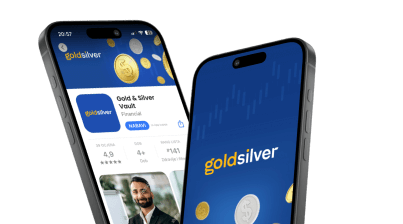![]() Silver Rises Over 120% YTD Invest Now
Silver Rises Over 120% YTD Invest Now ![]()
Daily News Nuggets | Today’s top stories for gold and silver investors December 23rd, 2025 Silver Breaks $70 as Industrial Demand Roars Back Spot silver surged past $70/oz for the first time ever, capping a weeks-long rally fueled by tight supply and red-hot industrial demand. Solar manufacturing, EV components, and electronics are driving the surge — and some refiners say they’re running at full capacity while miners struggle to keep pace after years of underinvestment. Silver is behaving less like a sleepy precious metal and more like a high-beta industrial barometer. When manufacturing demand collides with safe-haven buying — especially during currency volatility — moves like this happen. If silver holds above...
Daily News Nuggets | Today’s top stories for gold and silver investors December 22nd, 2025 Gold and Silver Smash Records Again Gold climbed above $4,400 per ounce Monday — another all-time high in what’s become a relentless rally throughout 2025. Silver followed suit, pushing past $68 per ounce and closing in on $70. Both metals have surged roughly 70% and 128% this year, respectively, making this the strongest annual performance since 1979. The latest spike comes as traders anticipate two Fed rate cuts in 2026, while geopolitical tensions — from the U.S. oil blockade against Venezuela to ongoing Middle East conflicts — are amplifying safe-haven demand. ETF inflows have climbed for four straight weeks, and central...
Daily News Nuggets | Today’s top stories for gold and silver investors December 18th, 2025 Inflation Cools More Than Expected in November Consumer prices rose 2.7% year-over-year in November, coming in below the 3.1% economists had forecast and up only slightly from October’s 2.6%. Core inflation (excluding food and energy) also surprised to the downside at 2.6% versus expectations of 3.0%. The softer-than-expected reading came after a government shutdown disrupted October data collection, leaving markets without a clean monthly comparison. Housing costs remain the sticky component, accounting for nearly 40% of November’s increase, though the pace of shelter inflation...



Samantha is wonderful. I was nervous about spending a chunk of money. I asked her to `hold my hand’ and walk me through making my purchase.
She laughed and guided me through, step by step. She was so helpful in explaining everything...
Travis was amazing! I was having difficulty with a wire transfer of my life’s savings, and I was very worried that I might not be able to receive it all. My husband just passed away and I’ve been worried about these funds along with grieving for 8 months. As soon as I got connected with Travis, my concerns were immediately addressed and he put me at ease. The issue was resolved within days. He even called me back with updates to keep me in the loop about what was going on with the funds. I am so grateful for a customer representative like Travis. He really cares for his clients.
Sam was also very helpful! I called and was connected to Sam within 30 seconds. She helped me with a fee that was charged to my account. She had a great attitude and took care of the fee quickly.

Outstanding quality and customer service. I first discovered Mike Maloney through his “Secrets of Money” video series. It was an excellent precious metals education. I was a financial advisor and it really helped me learn more about wealth protection. I used this knowledge to help protect my clients retirements. I purchase my precious metals through goldsilver.com. It is easy, fast and convenient. I also invested my IRA’s and utilize their excellent storage options. Bottom line, Mike and his team have earned my trust. I continue to invest in wealth protection and my own education. I give back and help others see the opportunities to invest in precious metals. Thank you.